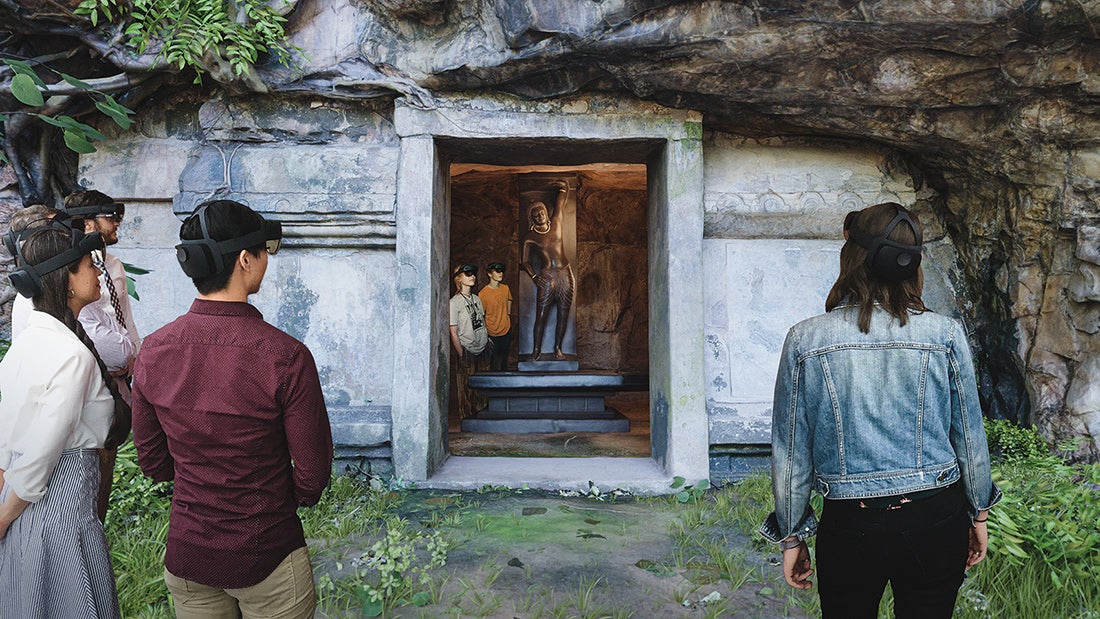lens
A Complicated, Centuries-Old Story Made New and Immediate
 Photo and digital rendering: The Cleveland Museum of Art. Mixed-reality development partner: The Interactive Commons at Case Western Reserve University
Photo and digital rendering: The Cleveland Museum of Art. Mixed-reality development partner: The Interactive Commons at Case Western Reserve UniversityMuseum visitors could walk around a holographic rendering of the
Cleveland Krishna in the cave temple where it once stood.
For the Cleveland Museum of Art’s recent groundbreaking exhibit, Revealing Krishna: Journey to Cambodia’s Sacred Mountain, holographic images transported visitors to a sacred cave in southern Cambodia. There, a sandstone sculpture stood 1,500 years ago, depicting the heroic story of Krishna, a young Hindu god holding up a mountain to shield villagers from a devastating flood.
Numerous partnerships helped make the immersive and moving exhibit possible, including two with Case Western Reserve.
First, the university’s Larry Sears and Sally Zlotnick Sears think[box] innovation center and its 3D scanning and digital modeling helped the museum correctly resolve a vexing question: Which limbs and other fragments belonged to its Krishna—a statue broken and dismantled centuries ago before coming to the museum in the 1970s—and which belonged to a similar Krishna at the National Museum of Cambodia? With the mystery solved, the museums exchanged fragments to properly restore their statues.
Next came the work of the university’s Interactive Commons team, which was the mixed reality development partner on the Revealing Krishna exhibit, helping the museum’s Digital Innovation team create you-are-there experiences. Museumgoers wore Microsoft HoloLens 2 headsets to view 3D holographic images, including the cave and the Cleveland Krishna as it likely appeared in its temple setting centuries ago.
“This was the largest museum exhibition using HoloLens technology in the world,” said Mark Griswold, PhD, faculty director of Interactive Commons and a radiology professor. He has led CWRU’s recent work with the museum as well as the university’s HoloLens partnership with Microsoft.
“We can’t wait to see what other remarkable stories we get to tell with this,” he said.





